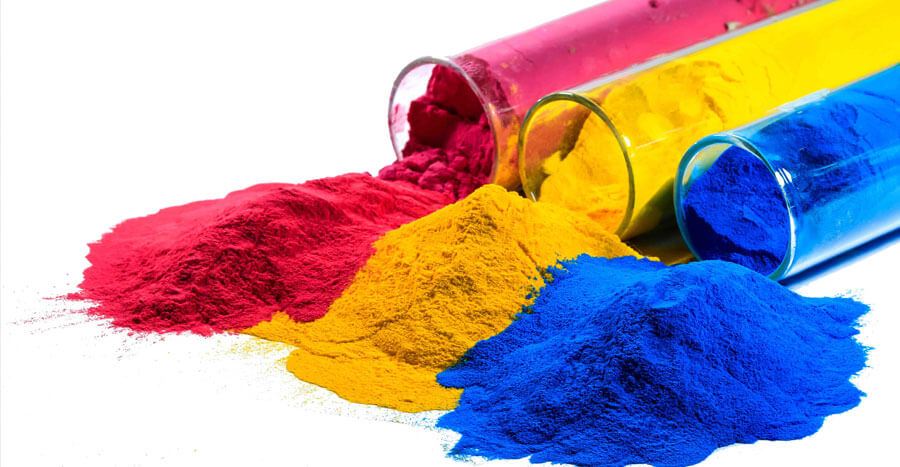
Dyes Testing
Reactive Dyes Testing
The present work deals with the ways of testing the compatibility of reactive dyes with cotton in different textile industries in Bangladesh. This report includes three laboratory trials that were carried out for three different reactive dyes to check the compatibility for use in a dye recipe on cotton knitted goods. In this study, Spectrophotometric analysis was conducted and the fixation of each dye was determined by using computer colour matching system. The results found from different industries were analysed and discussed. This testing can be used as a tool for selecting good quality dyes as well as to reduce dyeing cost and hazard. Finally few recommendations are highlighted to overcome the problem of selecting better quality dyes for cotton goods in textile industries in Ahmedabad.
- Dyeing Printing
- Washing Fastness
- Rubbing Fastness
- Sun Light Fastness
- Banned Amine
Direct Dyes Testing
We present here a method requiring no sample preparation for direct identification of the organic dye compounds quercetin, indigotin, and alizarin in reference materials, in solution, and also in situ in dyed fibers by use of direct analysis in real time (DART) ionization and high-resolution time-of-flight mass spectrometry. Exact mass determinations on small samples of dyed textiles were completed in less than 1 min. With the ability to identify flavonoid, indigoid, and anthraquinone classes of dyes, this technique shows early promise as an additional analytical tool in the challenging analysis of organic dyes in rare cultural heritage materials and possesses the unique advantages of sensitivity and simplicity without the preparatory procedures required by other methods.
- Dyeing Printing
- Washing Fastness
- Rubbing Fastness
- Sun Light Fastness
- Banned Amine
Vat Powder & Paste Dyes Testing
Vat dyes, which include indigo and anthraquinone-based dyes, are chemically complex dyes which are insoluble in water. They must first be reduced to the leuco form in an alkaline solution of sodium hydrosulfite before application to the cotton or rayon fiber. Air oxidation fixes the dye strongly on the fiber, resulting in excellent wash-fastness and light-fastness.
- Dyeing Printing
- Washing Fastness
- Rubbing Fastness
- Sun Light Fastness
- Banned Amine
Acid Dyes Testing
An acid dye is a dye which is a salt of a sulfuric, carboxylic or phenolic organic acid. The salts are often sodium or ammonium salts. Acid dyes are typically soluble in water and possesses affinity for amphoteric fibers while lacking direct dyes' affinity for cellulose fibers. When dyeing, ionic bonding with fiber cationic sites accounts for fixation of colored anions in the dyed material. Acids are added to dyeing baths to increase the number of protonated amino-groups in fibers. Some acid dyes are used as food colorants.
- Dyeing Printing
- Washing Fastness
- Rubbing Fastness
- Sun Light Fastness
- Banned Amine
Basic Dyes Testing
Basic dyes are dyes that are cationic. This means that the dye molecule has a positive charge, unlike most dyes, which have either a negative charge or no net electronic charge at all. The word "basic" refers to bases, as opposed to acids. It's definitely not basic in the sense of "back to basics". These are not dyes for beginners; they are not the most useful of textile dyes.
- Dyeing Printing
- Washing Fastness
- Rubbing Fastness
- Sun Light Fastness
- Banned Amine
Sulfer Dyes Testing
Sulfur dyes are complex heterocyclic molecules or mixtures formed by melting or boiling organic compounds containing amino or nitro groups with Na-polysulphide and Sulfur. Sulfur dyes are so called as they all contain Sulfur linkage within their molecules.
- Dyeing Printing
- Washing Fastness
- Rubbing Fastness
- Sun Light Fastness
- Banned Amine
Acitet Dyes Testing
O.B.A (Optical brightening Agent) Dyes Testing
Optical brightening agents (OBAs), also known as fluorescent brightening agents (FBAs), are chemical compounds that give whitening effect to fabric. They do this by absorbing light in the ultraviolet and violet regionand re-emit the light in the blue region. This blue light reduces the yellow colour of the substrate and give a brightened look. Unlike bleaching, it doesn’t leave ayellowish tinge and gives a much pleasing whiter-than-white appearance. Such a property sets optical brightening agents apart and makes it a much coveted thing in industries such as Textiles, Plastics, Paper, and Cosmetics.
- Dyeing Printing
- Washing Fastness
- Rubbing Fastness
- Sun Light Fastness
- Banned Amine
Pigment Powder & Paste Dyes Testing
Organic Pigment Powder find extensive use in ink, plastic and crayon industry and is used for preparing of organic ingredients. Being completely safe to use as well as made available in skin friendly properties, we can offer these in vibrant color shades so as to meet individual requirements. Being tested on defined quality procedures, these come suitably packed so as to avoid dampness.
- Dyeing Printing
- Washing Fastness
- Rubbing Fastness
- Sun Light Fastness
- Banned Amine
- Muller Application (Powder)
Disperse Dyes Testing
Disperse dyes testing identifies what types and levels of disperse dyes you may have in your products. Disperse Dyes are organic, water soluble dyes mainly used in the dyeing of polyester, nylon and acrylic fibres, and are widely used in the textile manufacturing.
- Dyeing Printing
- Washing Fastness
- Rubbing Fastness
- Sun Light Fastness
- Banned Amine
